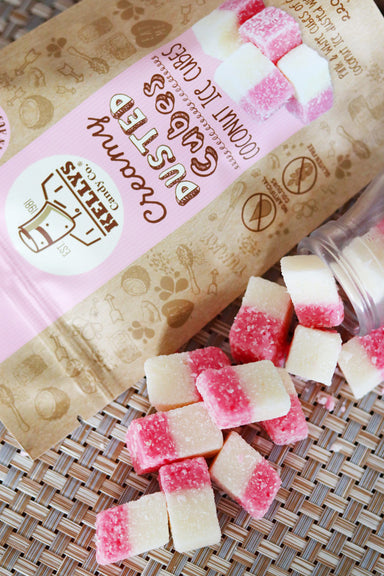An Unbiased View of I Luv Candi
An Unbiased View of I Luv Candi
Blog Article
The Ultimate Guide To I Luv Candi
Table of ContentsThe Ultimate Guide To I Luv CandiSome Known Factual Statements About I Luv Candi Facts About I Luv Candi UncoveredThings about I Luv CandiUnknown Facts About I Luv Candi
We have actually prepared a great deal of business plans for this kind of project. Here are the common consumer sections. Client Sector Summary Preferences Exactly How to Discover Them Kids Youthful clients aged 4-12 Vibrant candies, gummy bears, lollipops Partner with neighborhood colleges, host kid-friendly occasions Teenagers Teenagers aged 13-19 Sour candies, novelty items, fashionable deals with Engage on social media sites, team up with influencers Moms and dads Adults with young kids Organic and healthier alternatives, timeless sweets Offer family-friendly promotions, advertise in parenting magazines Trainees University and college students Energy-boosting sweets, budget-friendly snacks Partner with neighboring universities, promote during exam periods Present Buyers Individuals searching for presents Costs delicious chocolates, gift baskets Develop distinctive screens, provide customizable present options In analyzing the economic dynamics within our sweet store, we have actually discovered that customers usually spend.Observations show that a normal customer often visits the store. Particular durations, such as holidays and unique events, see a rise in repeat sees, whereas, during off-season months, the regularity might diminish. camel balls candy. Determining the life time value of a typical customer at the sweet store, we approximate it to be
With these factors in factor to consider, we can reason that the average profits per consumer, over the course of a year, hovers. The most rewarding customers for a candy store are usually families with young kids.
This market often tends to make frequent purchases, enhancing the shop's earnings. To target and attract them, the sweet-shop can employ colorful and lively advertising approaches, such as vibrant displays, appealing promotions, and maybe also holding kid-friendly events or workshops. Producing an inviting and family-friendly ambience within the shop can additionally enhance the general experience.
Some Ideas on I Luv Candi You Need To Know
You can also estimate your very own profits by applying different presumptions with our economic prepare for a sweet-shop. Ordinary regular monthly profits: $2,000 This kind of sweet-shop is usually a little, family-run company, perhaps recognized to citizens however not attracting great deals of vacationers or passersby. The store could use a selection of usual candies and a few homemade deals with.
The store does not generally carry rare or expensive things, concentrating rather on cost effective deals with in order to preserve regular sales. Thinking a typical spending of $5 per client and around 400 customers each month, the regular monthly earnings for this sweet-shop would be about. Typical monthly profits: $20,000 This sweet-shop advantages from its calculated location in a hectic city location, drawing in a multitude of clients looking for pleasant indulgences as they shop.
In enhancement to its diverse candy option, this store could also market related products like present baskets, sweet bouquets, and uniqueness items, offering numerous revenue streams - da bomb. The shop's location needs a greater spending plan for rent and staffing however brings about higher sales volume. With an estimated typical investing of $10 per consumer and regarding 2,000 clients each month, this shop could generate
I Luv Candi Fundamentals Explained
Situated in a significant city and traveler destination, it's a huge establishment, typically topped multiple floorings and potentially part of a nationwide or worldwide chain. The shop uses an enormous variety of sweets, including unique and limited-edition products, and merchandise like well-known clothing and devices. It's not just a store; it's a location.
The operational expenses for this kind of store are considerable due to the area, size, team, and features provided. Thinking an average purchase of $20 per consumer and around 2,500 customers per month, this flagship shop can achieve.
Classification Instances of Expenses Typical Month-to-month Cost (Variety in $) Tips to Minimize Expenditures Rent and Utilities Store rental fee, electrical power, water, gas $1,500 - $3,500 Take into consideration a smaller place, discuss rental fee, and make use of energy-efficient lighting and appliances. Inventory Candy, treats, product packaging products $2,000 - $5,000 Optimize click this link supply monitoring to reduce waste and track popular items to avoid overstocking.
Advertising and Marketing Printed matter, on-line advertisements, promos $500 - $1,500 Emphasis on cost-efficient electronic advertising and marketing and utilize social media platforms free of charge promotion. da bomb. Insurance coverage Organization liability insurance $100 - $300 Look around for competitive insurance coverage rates and take into consideration packing plans. Tools and Maintenance Sales register, show shelves, repairs $200 - $600 Buy used equipment when feasible and do routine maintenance to expand tools life expectancy
How I Luv Candi can Save You Time, Stress, and Money.
Charge Card Handling Fees Costs for processing card payments $100 - $300 Negotiate reduced processing fees with repayment processors or discover flat-rate options. Miscellaneous Workplace materials, cleaning supplies $100 - $300 Get wholesale and seek discounts on materials. A sweet store comes to be successful when its complete income surpasses its total fixed expenses.

A huge, well-located candy store would clearly have a higher breakeven factor than a small shop that doesn't require much earnings to cover their expenses. Interested concerning the earnings of your candy shop? Check out our straightforward financial plan crafted for sweet-shop. Merely input your own assumptions, and it will help you calculate the quantity you require to gain in order to run a lucrative company.
Unknown Facts About I Luv Candi

Last but not least, financial downturns that decrease consumer spending can influence sweet-shop sales and success, making it important for sweet-shop to manage their expenditures and adjust to changing market conditions to stay profitable. These dangers are usually included in the SWOT evaluation for a sweet shop. Gross margins and net margins are crucial indications utilized to assess the earnings of a sweet-shop company.
Basically, it's the earnings continuing to be after deducting costs directly pertaining to the sweet stock, such as purchase costs from providers, production prices (if the candies are homemade), and staff wages for those associated with production or sales. Net margin, on the other hand, consider all the expenses the sweet shop sustains, including indirect costs like administrative expenditures, marketing, lease, and taxes.
Sweet shops generally have an ordinary gross margin.For circumstances, if your sweet-shop gains $15,000 each month, your gross profit would certainly be roughly 60% x $15,000 = $9,000. Let's highlight this with an instance. Think about a sweet shop that marketed 1,000 candy bars, with each bar valued at $2, making the total profits $2,000. Nonetheless, the shop incurs expenses such as buying the sweets, utilities, and salaries available for sale personnel.
Report this page